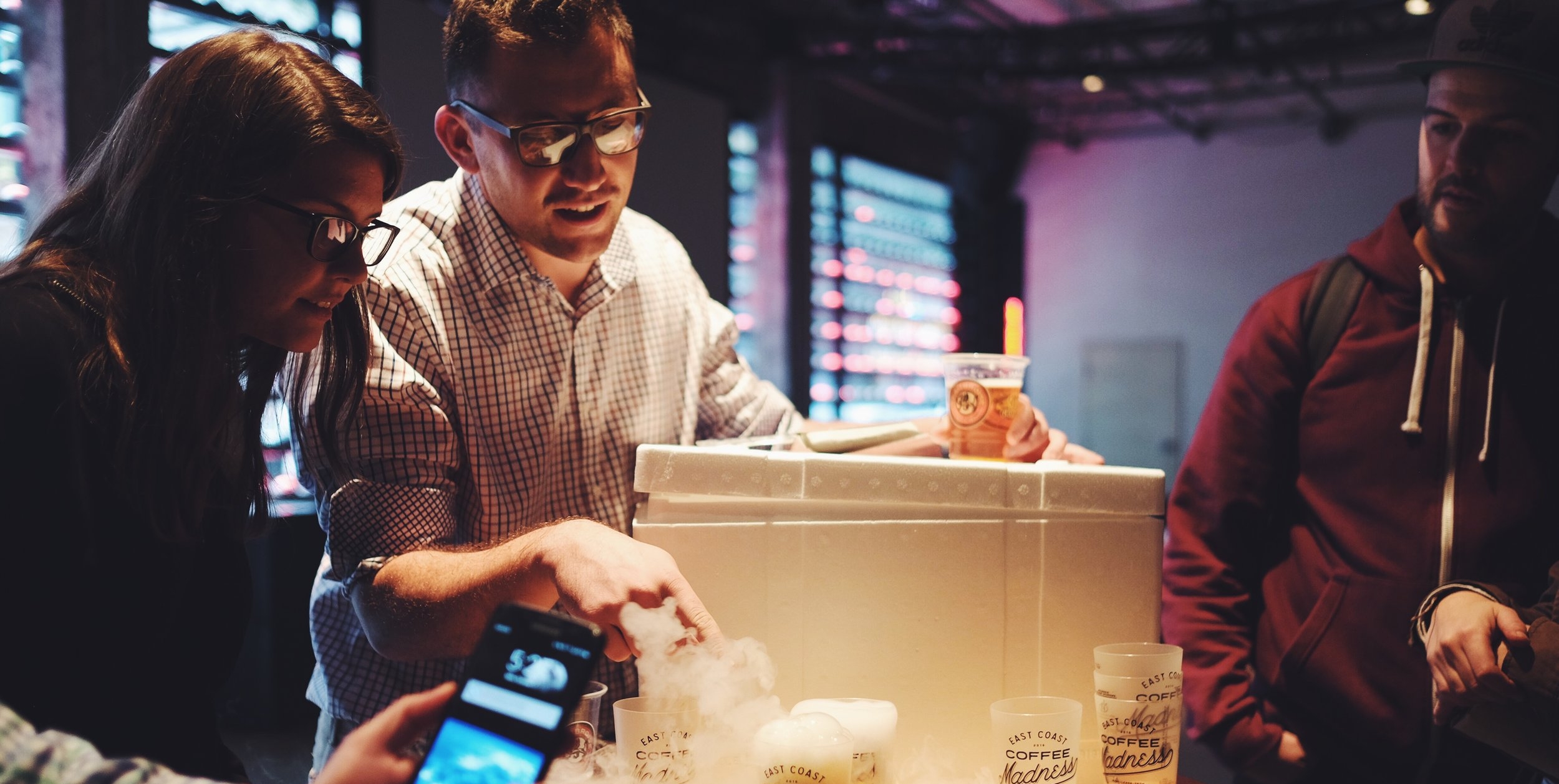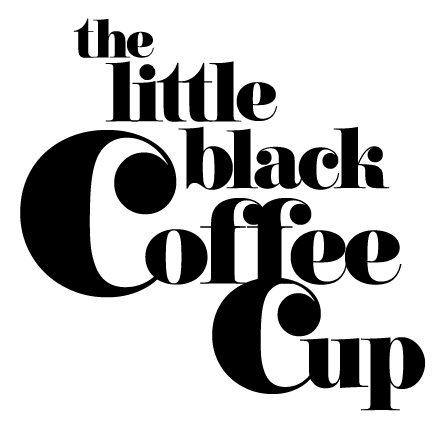Coffee Chemistry & The Refractometer | Interview with Christopher H. Hendon

On a brisk mid-October morning Christopher H. Hendon greeted an audience of enthusiastic coffee professionals at Montreal's East Coast Coffee Madness to present the findings of his current research. Hendon gave an engaging and relatable presentation, inciting countless laughs from the crowd, while using scientific data to uproot some common ideas, practices, and misconceptions about coffee. When Hendon challenged the relevance of refractometers, he created a stir. Coffee professionals have been relying on these devices to set recipes and ensure cup quality by measuring the percentage of total dissolved solids for years. Not only did Hendon provide a new perspective, but he affirmed the importance of questioning our assumptions about coffee, and conducting research to dispel myths.
Christopher H. Hendon has a Ph.D in Chemistry and is currently a postdoctoral associate at MIT. Known for co-authoring Water for Coffee with Maxwell Colonna-Dashwood, a ground breaking book that highlights the effects of water chemistry on coffee preparation, Hendon is continuing to make a mark on the specialty coffee industry by delving into issues such as, particle distribution in espresso preparation, and the influence of coffee temperature on grinding.
I am delighted that Hendon kindly took some time out to answer a few questions following his talk at ECCM in Montreal. If you are an industry professional, I highly recommend becoming acquainted with Hendon's work.
tLBCC: You describe yourself as a “theoretical materials chemist with a special interest in models of functional frameworks for catalysis and light harvesting.” What does that mean in Layman’s terms?
Christopher H. Hendon: I never really touch chemicals! I simply use computers to construct models of chemicals and predict how they behave with stimulus. For example, if I shine light on a material, will it conduct electricity? If the material is porous, can I store gas? etc.
tLBCC: How did you get into specialty coffee?
Christopher H. Hendon: In 2012 I began a Ph.D in the UK at the University of Bath. At the time I didn’t know anything about coffee. I met Maxwell and Lesley Colonna-Dashwood and we began sharing knowledge. They taught me coffee and I taught them chemistry. I have been working actively in the industry ever since.
tLBCC: In your recent talk at Montreal’s East Coast Coffee Madness Coffee you challenged the coffee industry’s use of refractometers. In simplest terms, how does a refractometer work and what does it measure?
Christopher H. Hendon: The refractometer is a device that measures the change in velocity of light at the interface between two materials. In summary more dense water slows light, causing the light to bend a bit. The magnitude of this bend determines the refractive index. A correlation is then drawn between the refractive index and the extent of extraction. This correlation only holds true within the parameters that it was designed for; routine extractions in filter coffee scenarios. Even then, it is hard to have confidence in the device, the correlation was never published. More importantly, we have sophisticated brew methods, and a deep knowledge of chemistry, which undermine the entire use because the refractive index of water is dependent on the compounds in the water. In espresso and designer water contexts, we can target different chemistry which bend the light more or less than the correlation can describe, and hence the measurement of velocity is not reading the extraction accurately.
tLBCC: What do you mean when you say a refractometer fails to account for the poly dimensionality in coffee?
Christopher H. Hendon: Coffee can be brewed with variable temperature, pressure, mass, ratio, etc, etc, etc. Unless you parameterize your device to be tolerant to all circumstances then you can’t ever be confident that your experiment (i.e. extraction) is within the reasonable parameters to validate the application of the device.
tLBCC: If a coffee shop is currently using a refractometer to gauge extraction yield and assist in setting recipes, do you recommend they continue using it? If not, what other tools or indicators could be employed to ensure a desired quality and consistency when brewing?
Christopher H. Hendon: Sure, but don’t place emphasis on the number it spits out. In fact, the process of logging data about mass in/out, water in/out, time, etc., is way more important. If you think it has helped you, then continue using it. I am not going to tell you that you can’t hammer a nail with a wrench: you can. You just can’t claim its a hammer.
The best tool you have, and the best analytical tool in your chemical arsenal still is your tongue. Use your mouth to make coffee taste good.
tLBCC: What is the future of measuring quality in brewed coffee?
Christopher H. Hendon: It will probably be some form of broad spectrum UV-Vis Spectrometer. But honestly, I don’t see much value in logging extraction. After all, who cares if you get 21% and the coffee still tastes bad. I might be on board with the application of a measurement for cost associated with the waste produced in coffee, but otherwise the measurement of extraction % is moot.
tLBCC: Can you give examples of a few chemicals found in brewed coffee: a few that have a favorable taste and a few that don't?
Christopher H. Hendon: Good tasting chemicals: Citric acid, sucrose, grapefruit mercaptan, linalool
Bad tasting chemicals: caffeine, halogenated phenols, short chain aldehydes
tLBCC: Aside from co-authoring Water For Coffee with Maxwell Colonna-Dashwood, you have recently done research on the effects of bean origin and temperature on grinding roasted coffee. Can you tell us a little bit about your findings?
Christopher H. Hendon: We did not set out hoping to see that grinding coffee cold would result in a better grinder performance. In fact, we simply wanted to elucidate whether the material (coffee) demonstrated fracturing temperature dependence. We were interested simply because coffee and the grinder change temperature throughout the day so we might imagine the grind also changes. The practical outcome is simple: freezing coffee results in a more skewed-gaussian particle size distribution. Whether this tastes better or worse is in the eye of the beholder.
tLBCC: What does this research mean for cafes and home brewers? Should we be storing our coffee in the freezer before grinding it to brew?
Christopher H. Hendon: I have had excellent coffee from the freezer. I think it works well, with the caveat that frozen coffee should be kept air tight until grinding. Having said that, it is a marginal increase in quality and a huge overhead in cost and effort. I think that not all science should have direct implications for practical use immediately. This is merely a stepping stone to understanding more about coffee.
tLBCC: Are you currently working on anything else we should know about?
Christopher H. Hendon: I sure am. My next papers will be on the effect of adding sugar to coffee, and separately the benefits of low pressure 'espresso’.
tLBCC: What most excites you about the specialty coffee industry right now?
Christopher H. Hendon: I love how much motivation people have. I am excited about the future of espresso. I am excited about improving our understanding collectively as a coffee community. I am VERY excited about the UC Davis Coffee Research Center.
tLBCC: Where can we see you speak next?
Christopher H. Hendon: I am penned in for the SCAA in Seattle in April. Other than that, I am relatively clear right now. I am sure that will change.
Connect with Christopher H. Hendon: website | twitter
Also, be sure to check out this article in the Atlantic: Specialty Coffee's Resident Scientist




